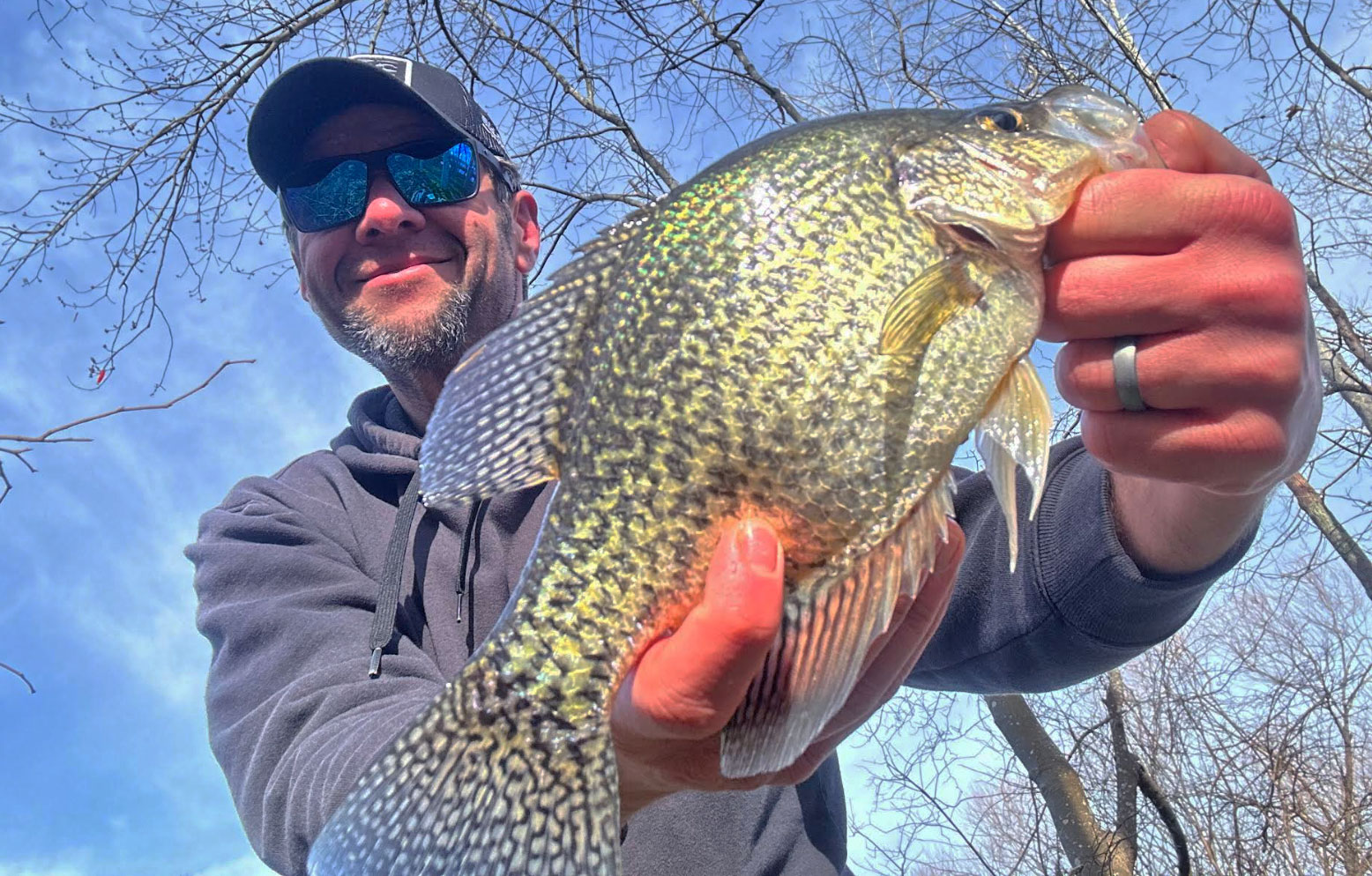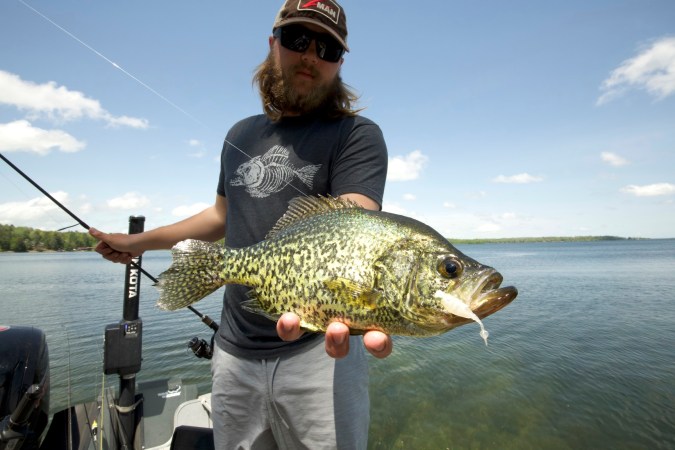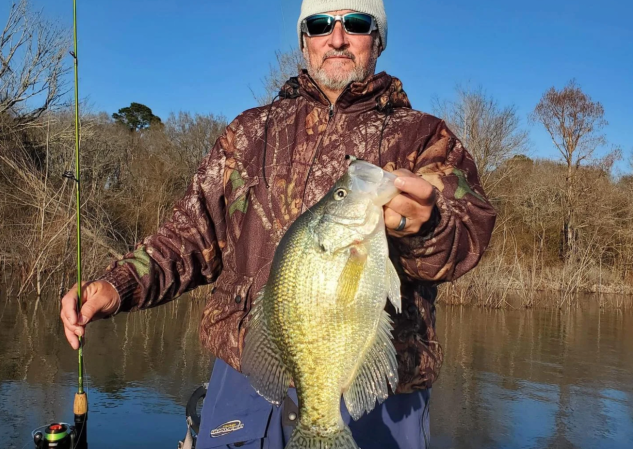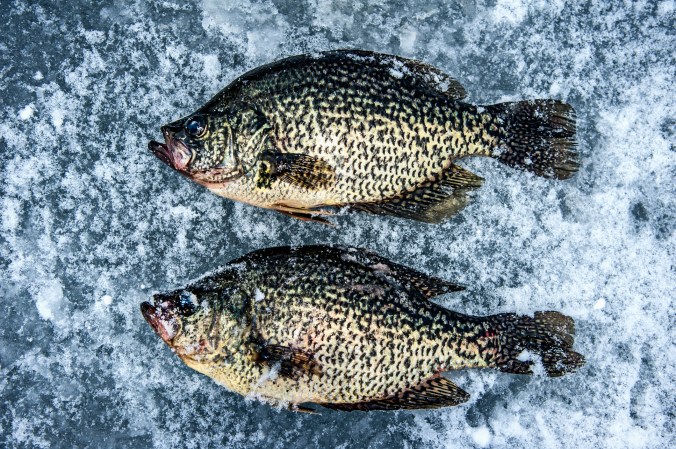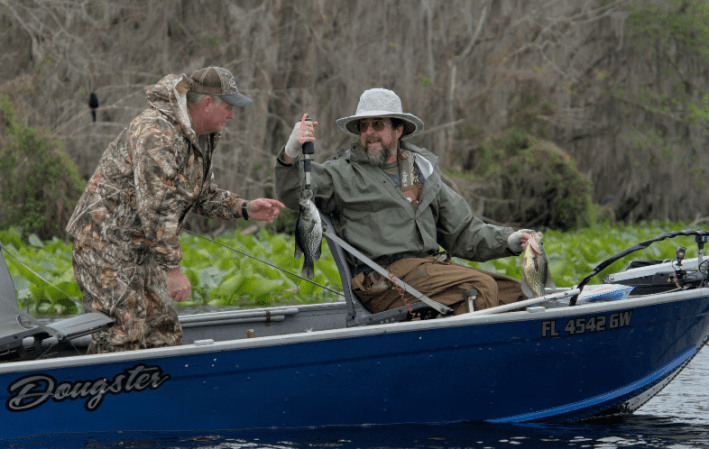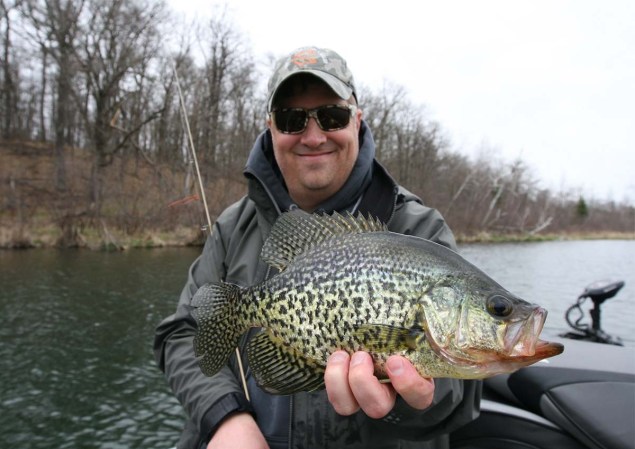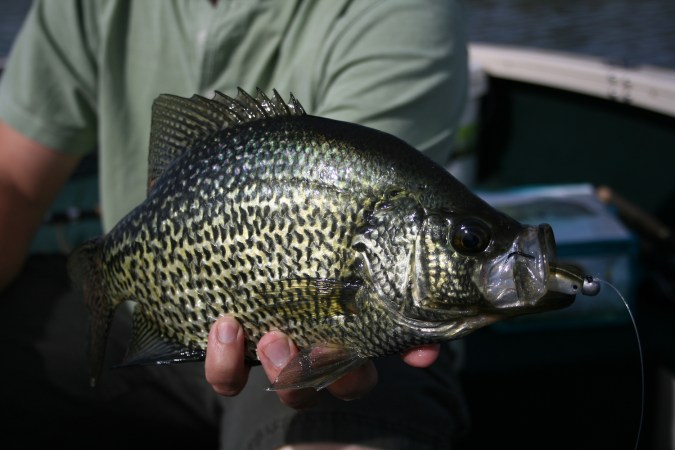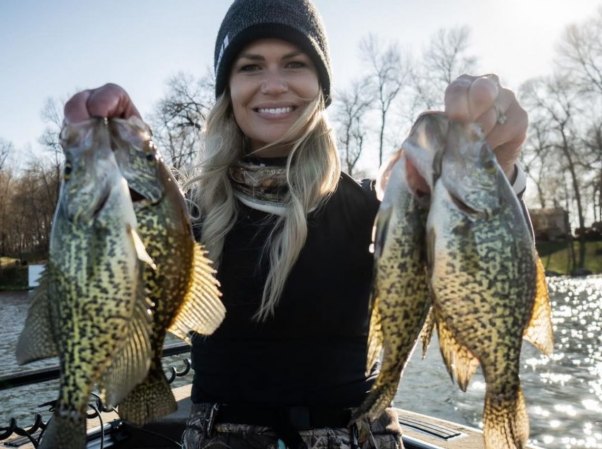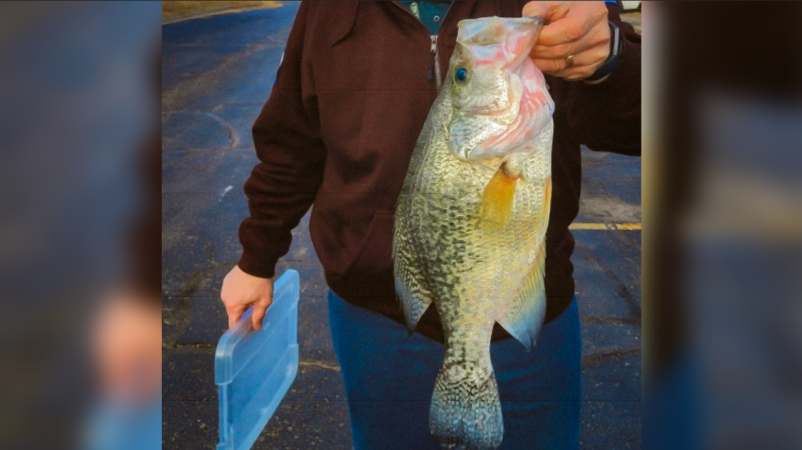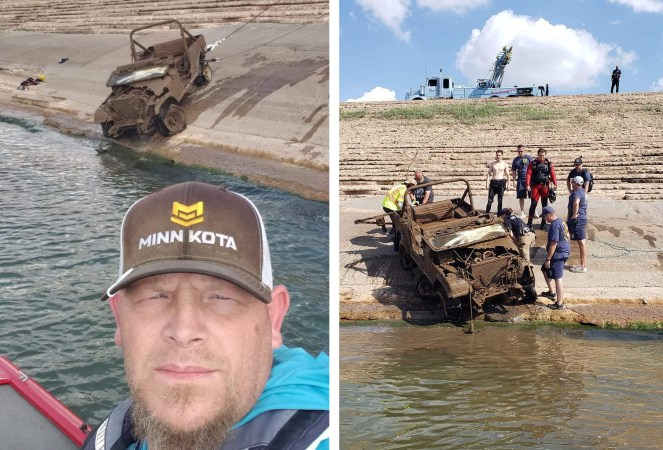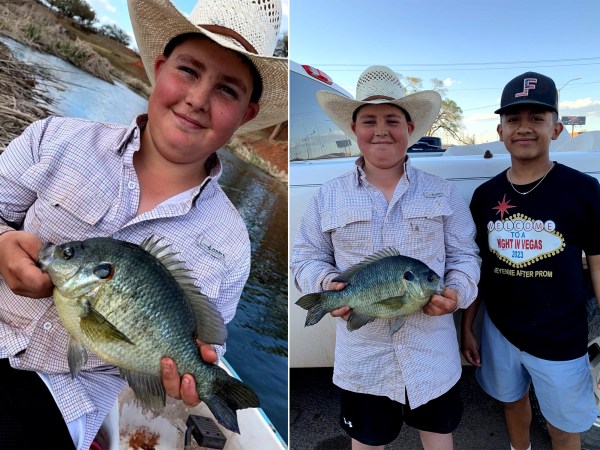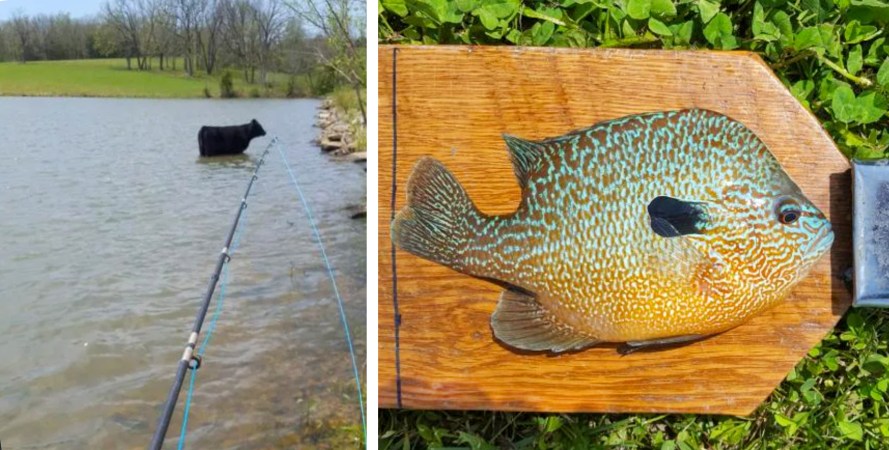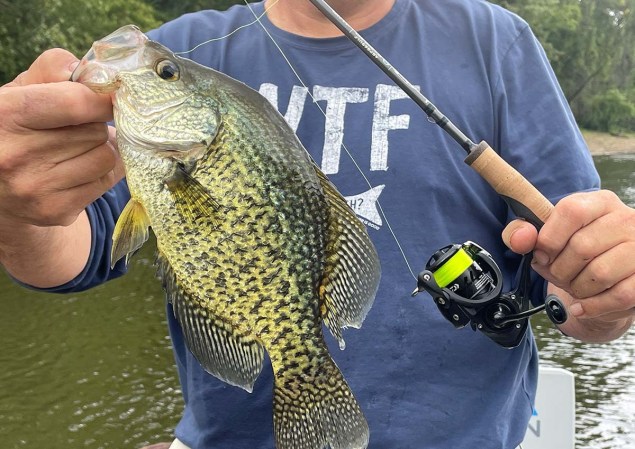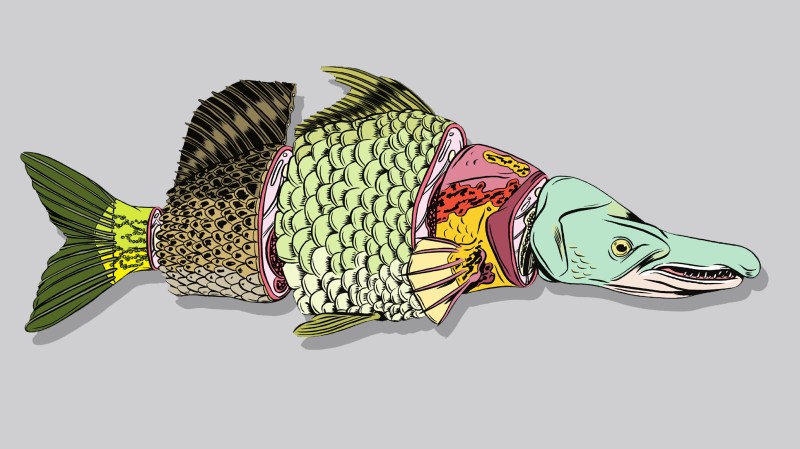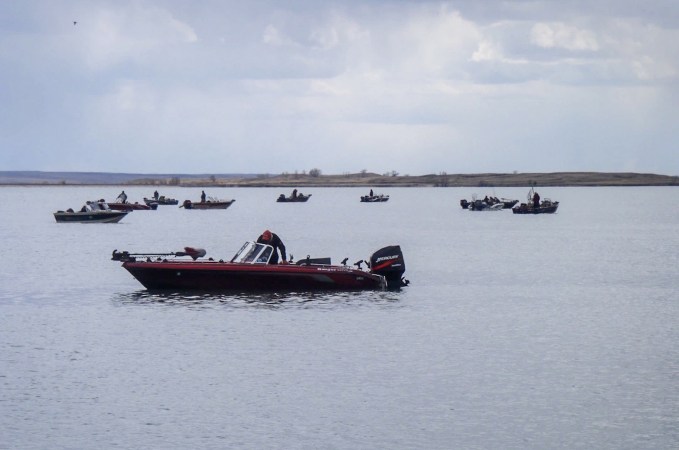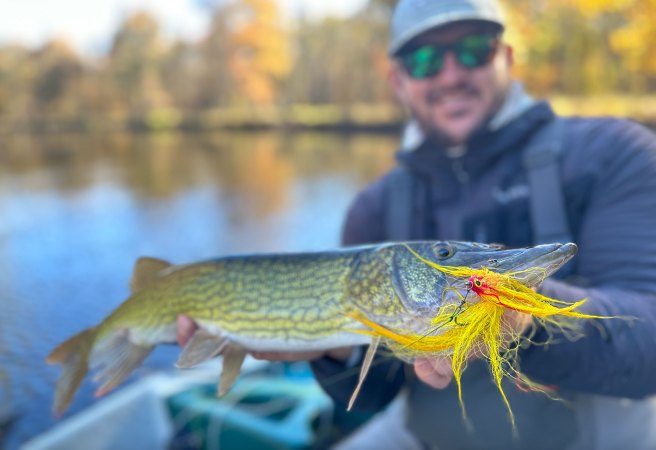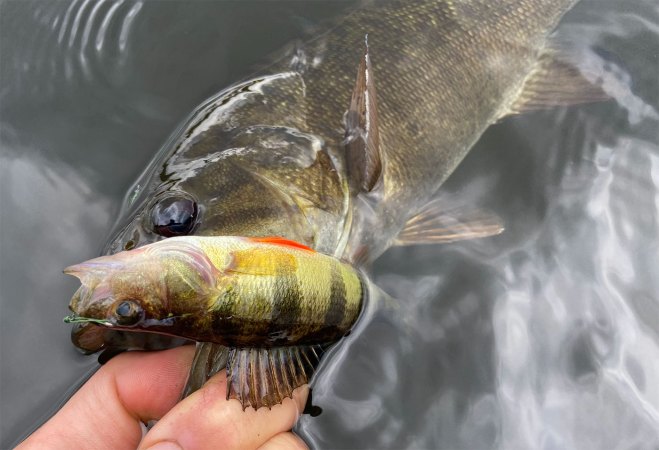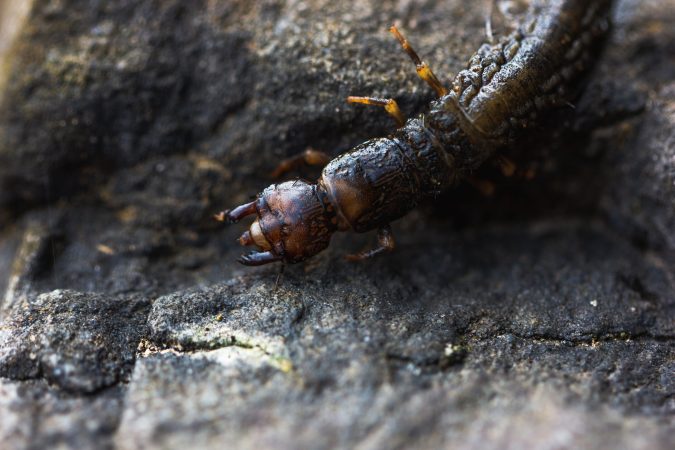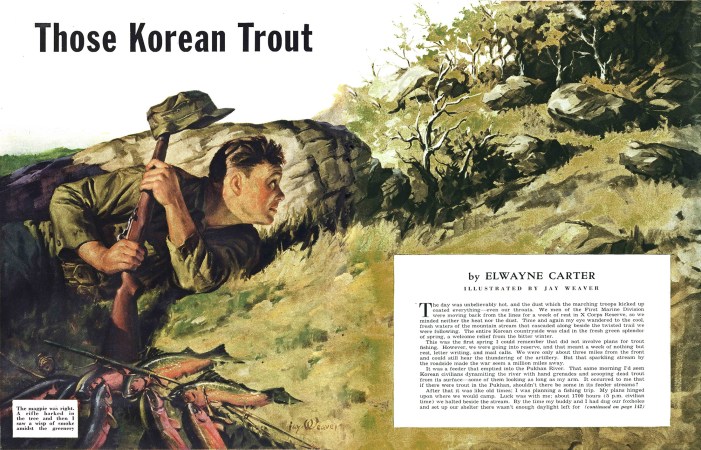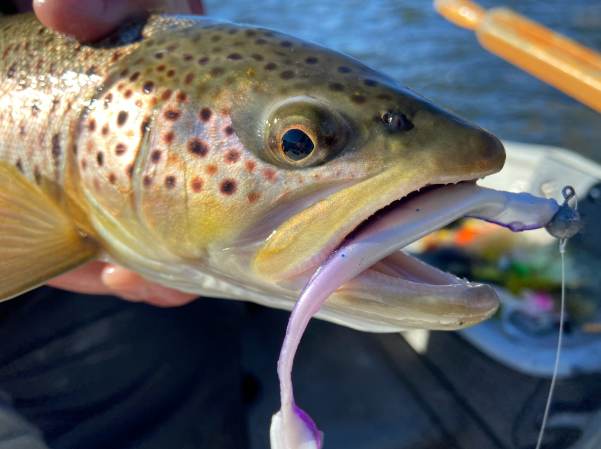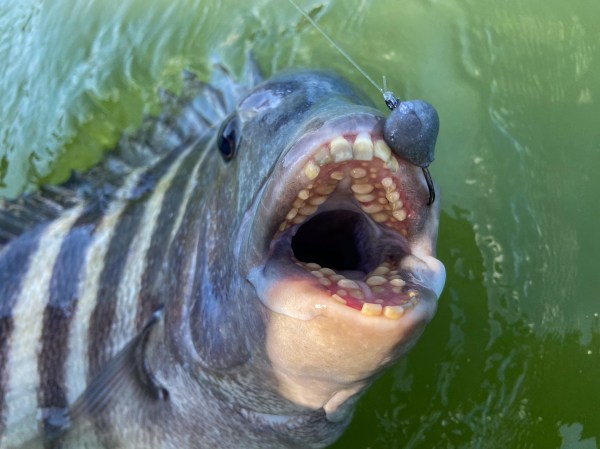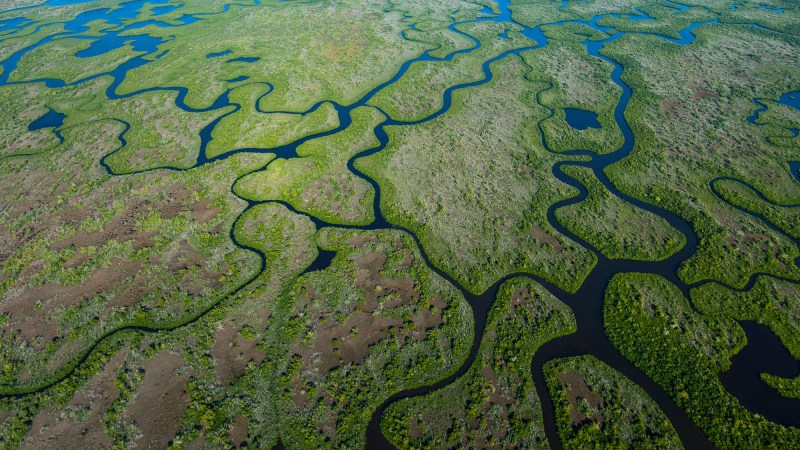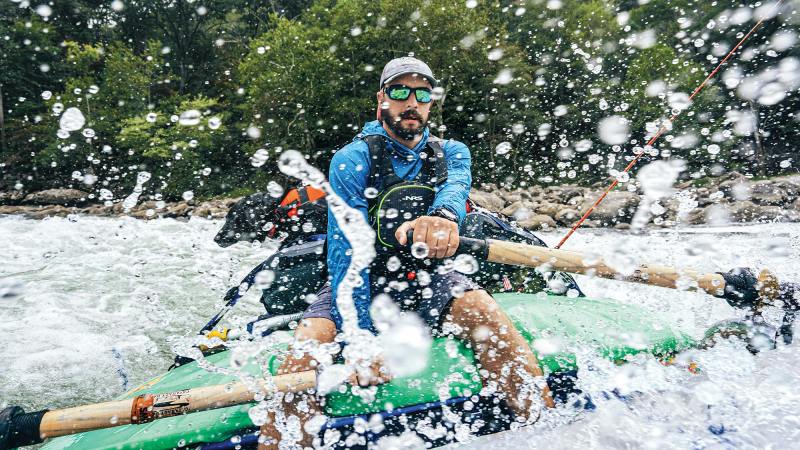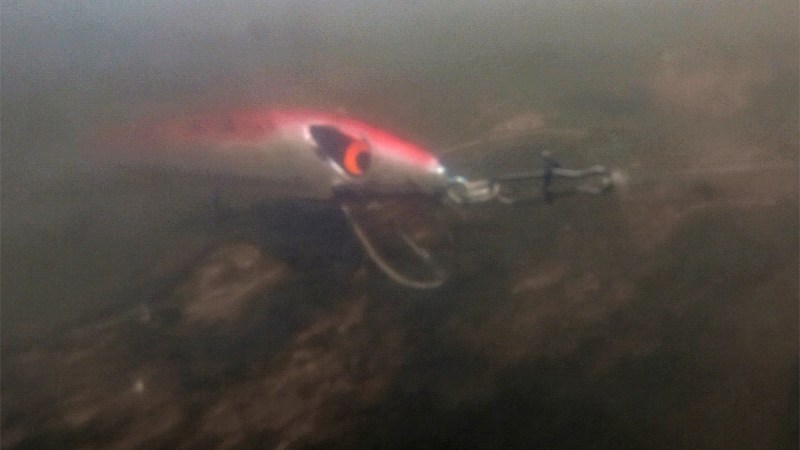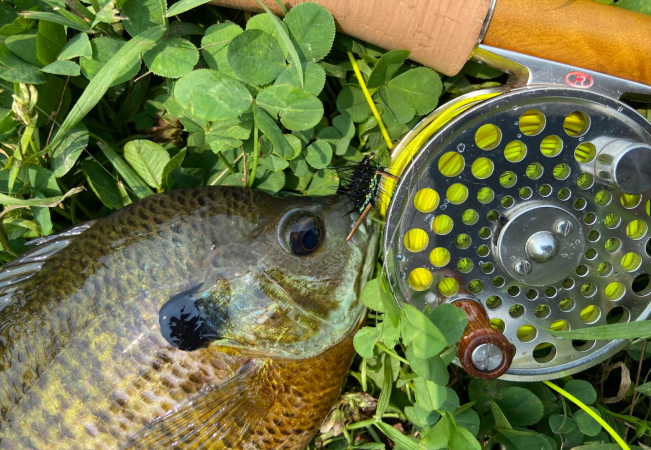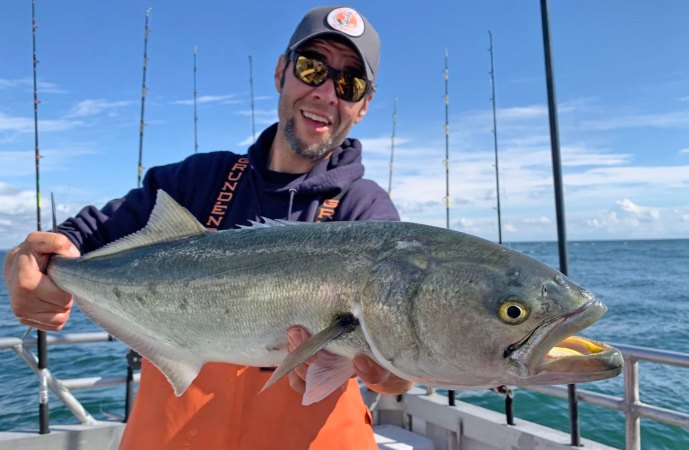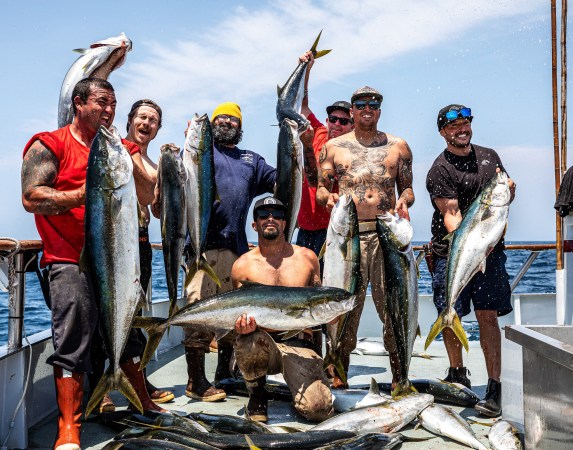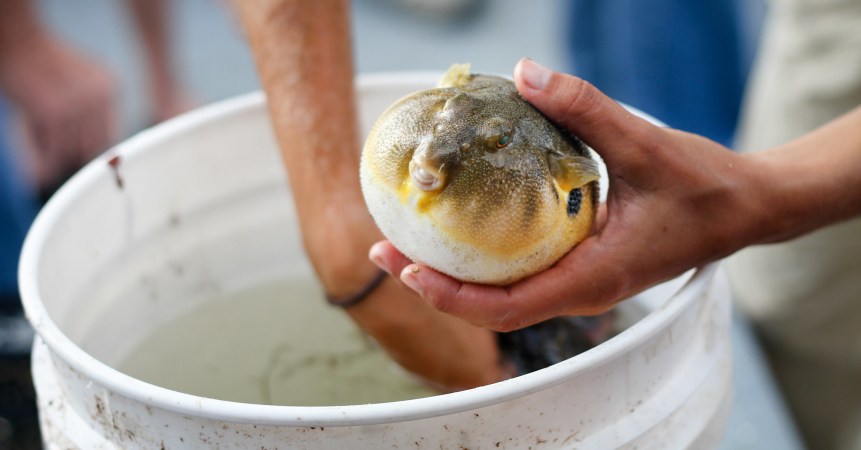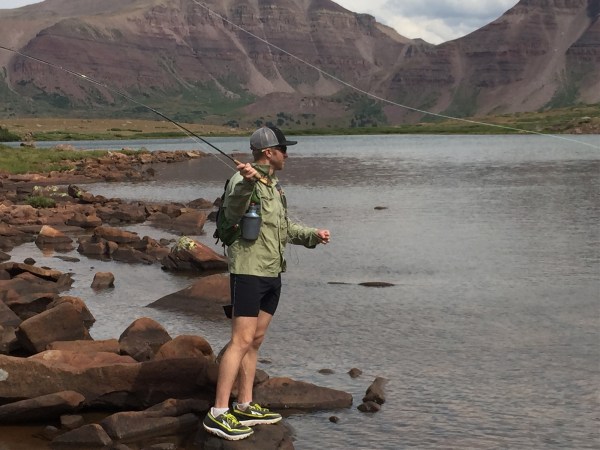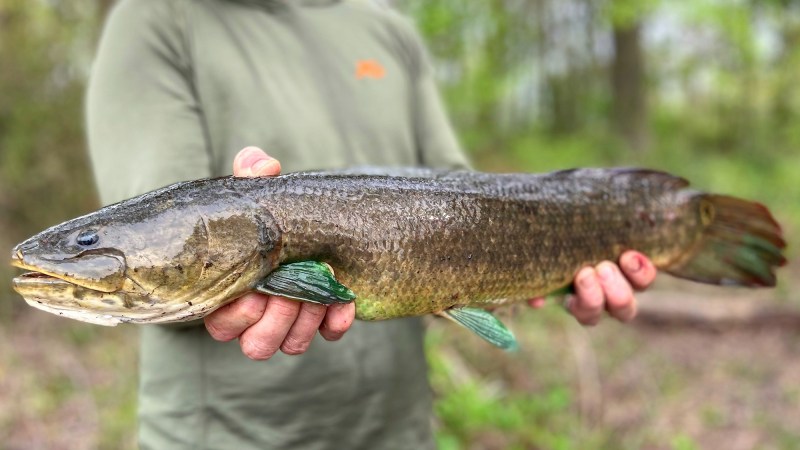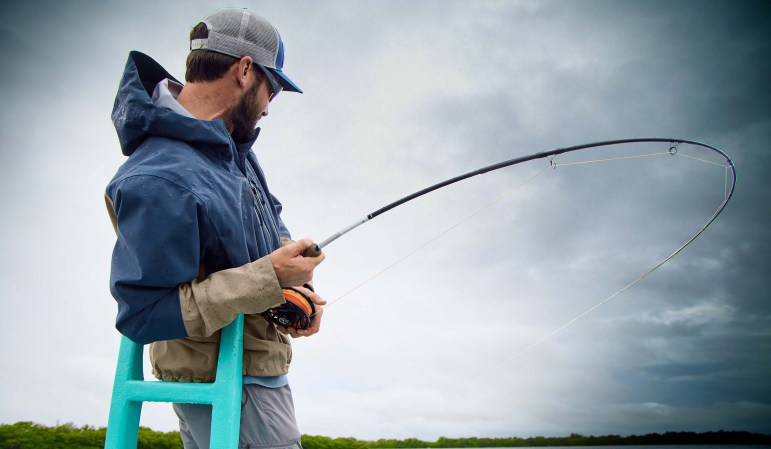We may earn revenue from the products available on this page and participate in affiliate programs. Learn More ›
The popularity of crappies varies by region, and it’s fair to say they’re the biggest deal in the South. But they exist in almost every state of the Union. It’s just that other local favorites like trout, walleyes, salmon, and bass often push crappies to the backburner. Regardless of where you live, there is no easier time to catch a mess of them than in the spring. Even better, you don’t need a boat to get in on the action.
I’ll admit that I pay very little attention to crappies throughout most of my local fishing season in Eastern Pennsylvania, but in spring I can’t wait to get after them. They’re often the first fishery that gets hot and heavy after a long, cold winter, and while a boat is a plus, it’s absolutely not required. A shore angler can into a bite so fierce it can actually become boring after a while because you’ve caught so many fish. Best of all, you likely already have everything you need to be successful, save for maybe a few lures which are wonderfully inexpensive. So, whether you’re feeling a fish fry or just love watching a bobber dip over and over, here’s the simple plan for catching crappies from the bank.
The Right Rod & Reel for Spring Crappies
Southern anglers lean on a variety of specialty rods and tackle to partake in uniquely southern methods like spider rigging from a boat and wade fishing flooded banks with extra-long rods that allow them to quietly drop a jig vertically into a brush pile. Though these tactics could certainly be employed successfully elsewhere in the U.S., you don’t need specialized gear—least of all a unique rod and reel—to catch spring crappies where you live.
If you target trout, you likely already have the perfect outfit to attack spring crappies on foot. A five-and-a-half to 7-foot ultra-light rod is ideal, and a small spinning reel spooled with 4-pound line is perfect. Even if you don’t have an ultra-light outfit, a light-action bass rod will work fine, too, though light rods with a little flex and light line will do a better job of delivering the small baits crappie crave.
If all you have is a medium-action outfit, at least consider adding a long top shot of light monofilament or fluorocarbon, especially if the reel is spooled with braided line testing heavier than 10 pounds. Not only can crappies be line shy, but the small lures you’ll need to target them will present much more naturally on light line. Read our review of the best crappie lines here.
Read Next: Best Crappie Rods
Must-Have Spring Crappie Lures
From coast to coast, it’s hard to argue that there’s a more ubiquitous crappie lure than a simple micro tube. These come in a wide range of colors, and they’re available in individual packages or kits that come with jigheads. The jighead is inserted into the tube and the eyelet is poked through the top of the tube. When rigged on the line, the configuration allows the tube to move and rest in a horizontal position. Though a micro tube might be the most productive crappie lure of all time, there are certainly other options.
Any small soft-plastic lure jig on a small jighead that mimicks a tiny baitfish can be a crappie killer. Those with paddle tails or sword tails that wiggle and emit a little vibration with the slightest movement are particularly lethal. Though any of these little soft plastics can be fished alone, the most common approach is to rig them below a small bobber or float. This adds some casting weight to your line for better delivery and allows you to quickly adjust the depth at which your lure suspends. Dragging or popping the bobber gives the lure life and the second it dips below the surface, you know to strike.
In the colder water of early spring, a suspended soft plastic works well because it can be fished very slowly and kept in the zone for a long time. In fact, sometimes when the fish are lethargic, just the wind or surface chop makes the bobber and lure move enough to score bites. When it’s cold, doing less often earns you more, but as the water heats up, in-line spinners and small crankbaits can be lethal if the fish are feeding aggressively.
Read Next: Best Crappie Lures
Finding Spring Crappies On Foot
Crappies spend the cold winter months suspended in the deepest basins within any lake or pond. As the water warms in spring, however, their spawning instinct is triggered, and they slide into shallower water. What they’re looking for above all else is protection, which makes locating them easier. And this time of year if you locate one you’ve likely found the motherlode.
Two of the most critical areas to focus on are creek mouths and protected coves. Even if the mouth of a creek or cove is relatively small, hundreds and hundreds of crappies can pile into these tight areas where they’ll remain for several months or until the spawn is over and they head back to deeper water. An abundance of structure like fallen trees or submerged brush is even more enticing to the fish, and it’s not uncommon for one or two spots to be loaded while similar ones are void of life due to a lack of structure.
What’s important to understand, however, is that crappies often move around within those spring holding areas. In general, the colder the water the less they travel—of course they also bite with less gusto, too. As the water temperature creeps above 50 degrees, crappies will move around a cove or creek mouth like a wolf pack hunting. You may catch one or two casting to a specific area, then suddenly they’re gone, and you need to fancast in different directions to locate them again. Crappie schools can also get wise to certain lures or colors after you sting a few, so don’t hesitate to change frequently during a visit.
Final Thoughts on Catching Crappies from Shore
Use digital maps to find public water access that’s off the beaten path. That public fishing pier at the popular local park usually isn’t the best place to find good numbers of crappie. And when you do find a crappie honey hole, make sure you’ve got a stringer with you.

